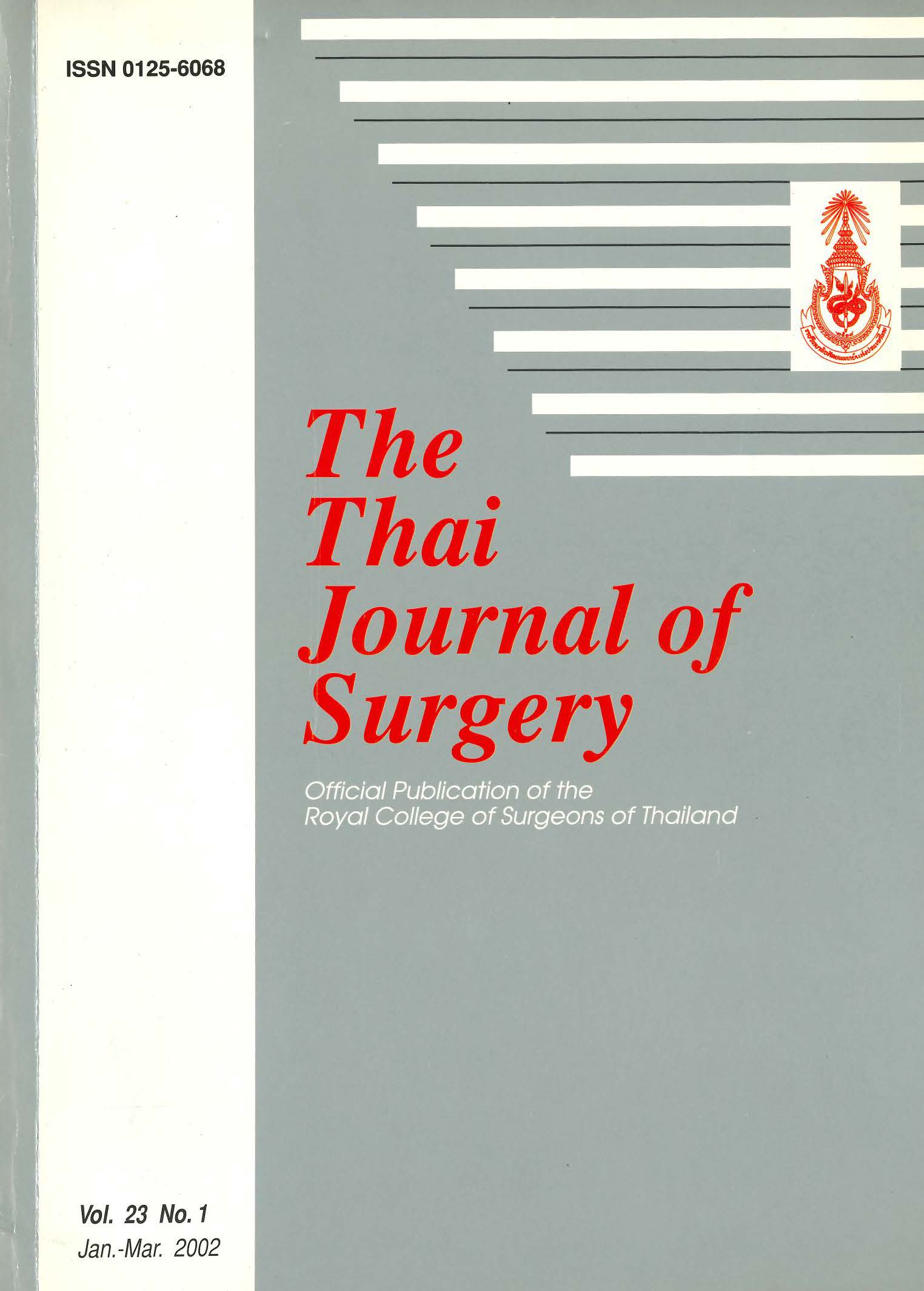Digital Camera Aids in Early Detection of Flap Ischemia
Abstract
Background: Microvascular condition is the main factor in successful free-tissue transfer, which has gained increasing popularity during the past 20 years. Detection of early failure is of paramount importance for salvaging ischemic flap. Color is more frequently used as a clinical indicator in detecting flap ischemia. However, expertise is needed in detection the subtle change of color. By using digital camera, pictures taken serially can be analyzed by personal computer to compare the degree of color changes. With this hypothesis, we experimentally created an ischemic state in volunteers and correlated the differences of color with the disturbances of blood supply in digital camera pictures.
Objectives: To detect early change in color of tissue ischemic state by using digital camera.
Materials and Methods: A pneumatic tourniquet was applied to the left arm of 5 healthy colleagues with 250 mmHg pressure for 15 minutes. Two different digital cameras (Kodak DC 260 and Olympus Camedia. c.2000) were used together simultaneously, in order to compare two studies at the same time. The photograph was taken serially every 5 minutes since the pressure was applied. The pictures were analyzed by Adobe Photoshop software to measure the skin color over their forearms in RGB and CMYK modes. Stata statistic program was used for data analysis. The values of the colors were plotted corresponding to the time intervals. The difference of color magnitude was calculated and analyzed.
Results: The preliminary study showed the differences in magnitude of color change at different time intervals. But statistic significance could not be measured due to the limited number of the samples. However, there is a trend that digital cameras can possibly detect subtle change of color in ischemic state though invisible to the human eyes.
Conclusion: Digital cameras may aid in predicting ischemic state. However, further studies in clinical trial are needed to conclude the results. Therefore, the method of measuring changes of colors with a digital camera will be applied to patients in Songklanagarind Hospital soon.
References
2. Hidalgo DA, Disa JJ, Cordeiro PG, Hu QY. A review of 716 consecutive free flaps for oncologic surgical defects: refinement in donor-site selection and technique. Plast Reconstr Surg 1998; 102(3): 722-32; discussion 733-4.
3. Yuen JC, Feng Z. Reduced cost of extremity free flap monitoring. Ann Plast Surg 1998; 41(1): 36-40.
4. Shaw WW. Microvascular free flaps: The first decade. Clin Plast Surg 1983; 103: 3.
5. Hidalgo DA, Jones CS. The role of emergent exploration in free tissue transfer: A review of 150 consecutive cases. Plast Reconstr Surg 1990;86: 492.
6. Hofer SO, Timmenga EJ, Christiano R, Bos KE. An intravascular oxygen tension monitoring device used in myocutaneous transplants: A preliminary report. Microsurgery 1993;14: 304-9.
7. Stack BC Jr, Futran ND, Ridley MB, Schultz S, Sillman JS. Signal averaging and waveform analysis of alser Doppler flowmetry monitoring of porcine myocutaneous flap: 1. Acute assessment of flap viability. Otolaryngol Head Neck Surg.1995;113(5): 550-7.
8. Stack BC Jr, Futran ND, Shohet MJ, Scharf JE. Spectral analysis of photoplethysmograms from radial forearm free flaps. Laryngoscope 1998; 108(9): 1329-33.
9. Hirigoyen MB, Blackwell KE, Zhang WX, Silver L, Weinberg H, Urken ML. Continuous tissue oxygen tension measurement as a monitor of free-flap viability. Plast Reconstr Surg 1997;99(3): 763-73.
10. Nielsen M, Riis A, Jahn H, Gottrup Finn. Measurement of tissue oxygen tension in vascularised jejunal authografts in pigs. Scand J Plast Reconstr Hand Surg 1995; 29:297-302.
11. Meninguad JP, Basset JY, Divaris M, Bertrand JC. Cine-grammography and 3-D mission tomoscintigraphy for evaluation of revascularized mandibular bone grafts. J Craniomaxillofac Surg 1999; 27(3): 168-71.
12. Wechselberger G, Rumer A, Schoeller T, Schwabegger A, Ninkovic M, Ander H. Free-flap monitoring with tissue-oxygenation measurement. J Reconstr Microsurg 1997;13(4):125-30.
13. Nabawi A, Gurlek A, Patrick CW Jr, Amin A, Ritter E, Elsharaky M, Evans GR. Measurement of blood flow and oxygen tension in adjacent tissues in pedicled and free flap head and neck reconstruction. Microsurgery 1999; 19(5): 254-7.
14. Thorniley MS, Sinclair JS, Barnett NJ, Shurey CB, Green CJ. The use of ear-infrared spectroscopy for assessing flap viability during reconstructive surgery. Br J Plast Surg 1998; 51: 218-226.
Downloads
Published
How to Cite
Issue
Section
License
Articles must be contributed solely to The Thai Journal of Surgery and when published become the property of the Royal College of Surgeons of Thailand. The Royal College of Surgeons of Thailand reserves copyright on all published materials and such materials may not be reproduced in any form without the written permission.



